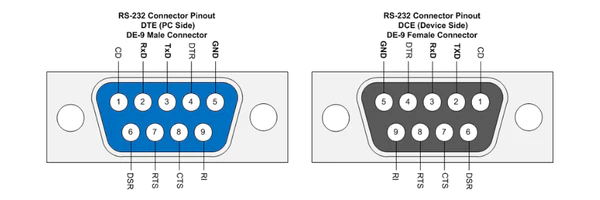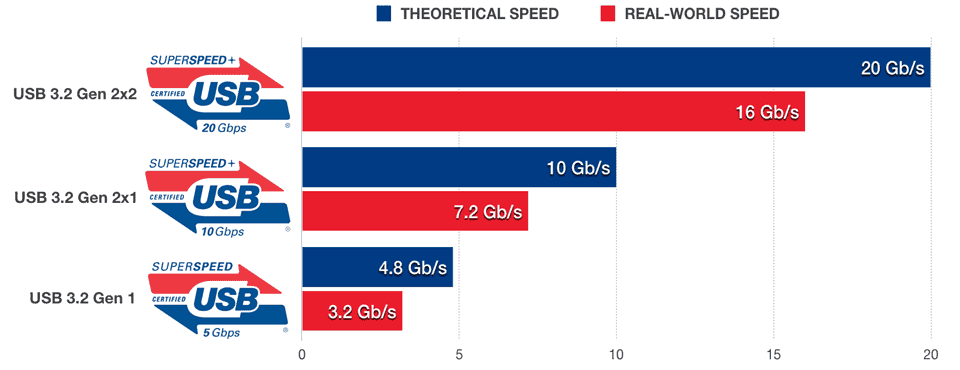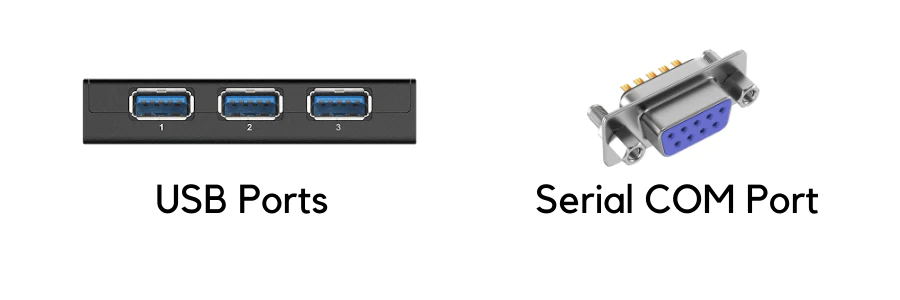Serial ports and USB ports are two different communication interfaces used to connect devices to computers. While serial ports have been widely used in industrial settings for many years, USB ports have become the standard for consumer-grade devices. This article explores the differences between serial COM ports and USB ports, their advantages, and their applications in industrial environments.
Serial Ports
Serial ports, such as the RS-232 port, were introduced in the 1960s and are still commonly found in industrial settings. They provide reliable and simple connectivity for legacy factory equipment and machinery. Serial ports operate at low data transmission rates, with the RS-232 standard reaching a maximum of 1Mbps. Despite their limitations in speed, serial COM ports remain crucial for connecting industrial automation systems and other devices that require simple and low-speed interfaces.

USB Ports
USB ports, short for universal serial bus, have replaced serial ports in most consumer-grade devices due to their higher data transfer speeds and versatility. USB ports offer several advantages over serial ports, including faster data transfer rates and the ability to connect multiple peripherals to a single port. USB ports also can deliver power, allowing devices to be charged and powered directly from the port itself. Additionally, USB ports are more durable than serial ports, as they use robust pins that are less prone to damage.
Advantages of USB Ports
1. Speed
USB ports provide significantly higher data transfer speeds compared to serial ports. The various generations of USB, such as USB Gen 1, Gen 2, and Gen 3, offer different speeds ranging from 12 Mbps to 10,000 Mbps, allowing for faster and more efficient communication between devices.

2. Power
USB ports can deliver power to connected devices, eliminating the need for external power sources. With different USB standards offering varying power capabilities, devices can be quickly charged and powered through the USB port.
3. Durability
USB ports are more durable than serial ports due to their robust pin design. They are less prone to damage and provide a reliable connection for devices.
Industrial Applications
Serial ports are still widely used in industrial settings, especially for connecting legacy equipment and sensors that rely on simple and reliable communication. They are commonly found in embedded computing systems, industrial control equipment, and monitoring devices. USB ports, on the other hand, have become the standard interface for connecting peripherals, such as high-resolution cameras, sensors, printers, and human interface devices (HIDs), to industrial computers. USB ports offer the required bandwidth for these devices, enabling efficient data transfer and connectivity.
Serial COM Ports Vs. USB Ports

While USB ports have replaced serial ports in consumer-grade devices, serial COM ports are still essential in industrial settings due to their reliability and compatibility with legacy equipment. A combination of serial and USB ports in industrial computing solutions ensures compatibility with a wide range of old and new devices. The interface choice depends on the industrial application’s specific requirements, balancing the need for simple, low-speed communication with the advantages of high-speed data transfer and power delivery offered by USB ports.


